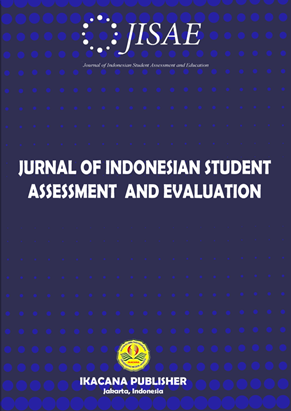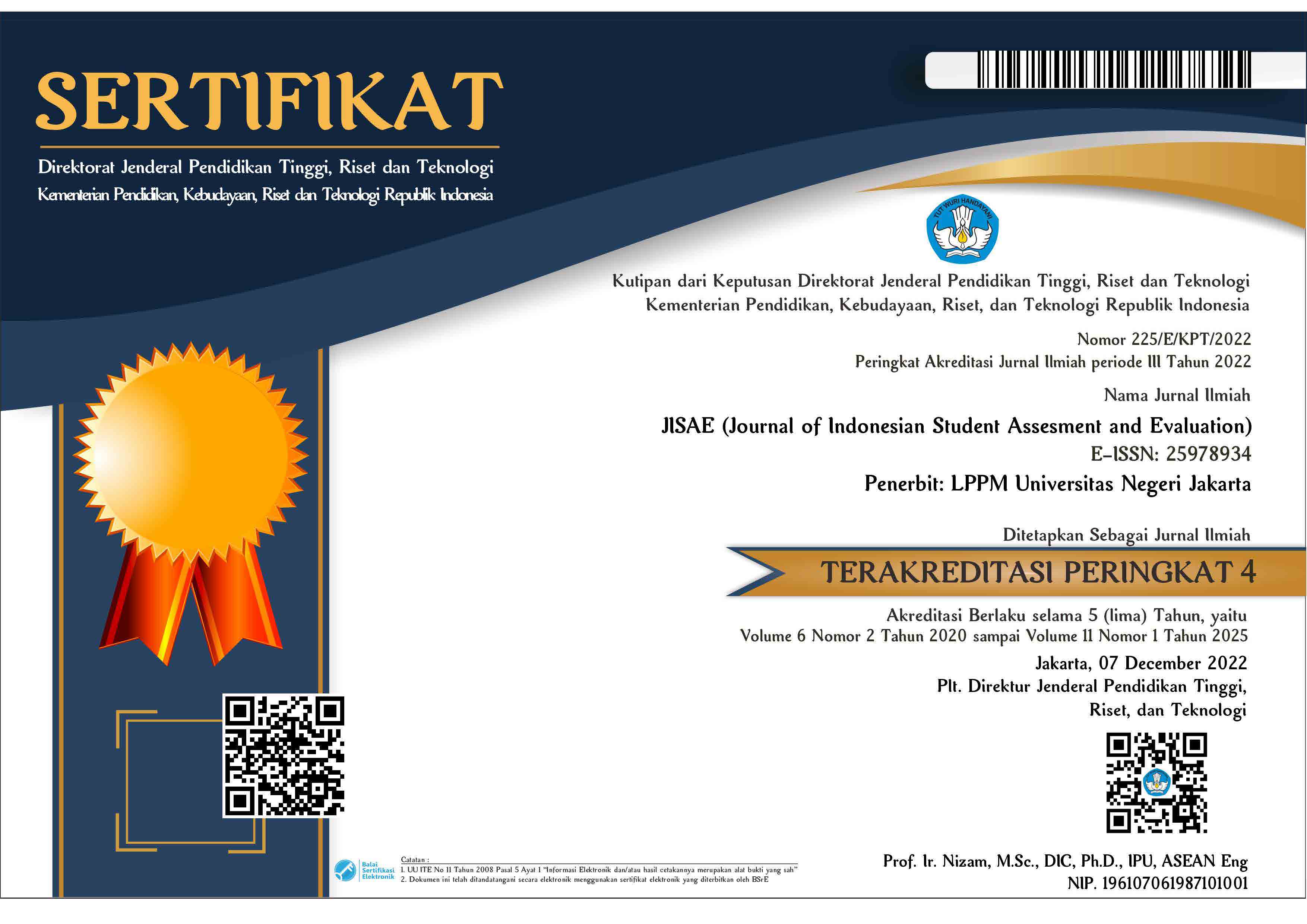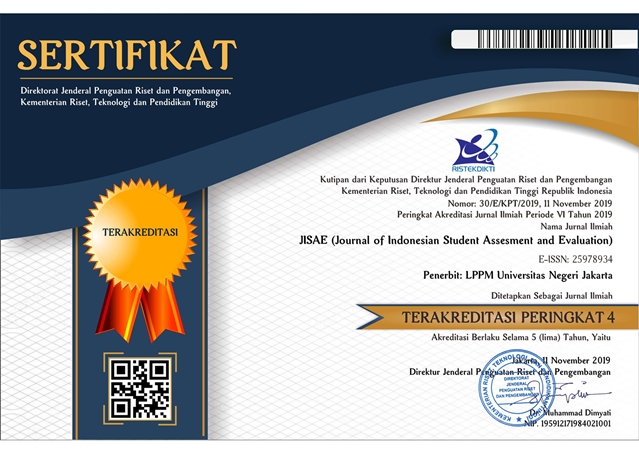EQUATING METHOD FOR LEARNING OUTCOMES OF ELEMENTARY SCHOOL/MADRASAH STUDENTS
DOI:
https://doi.org/10.21009/jisae.v8i1.25361Keywords:
equating, nominal weight mean, ability distributionAbstract
This study aims to determine the method of equalizing a good score on a small number of items that are often found at the elementary/madrasah level. This research is a simulation study conducted by comparing capabilities in terms of three distributions. The sample size used in this study was 50 responses for the distribution of the ability of each group (normal, positive skewness, and negative skewness). Replication was carried out in 50 for each ability group using the help of Wingen3. The indicator used to evaluate the results of the equation is the Root mean squared error. The results showed that groups with the same ability skewness distribution (normal ability distribution - normal ability distribution, positive skewness ability distribution - positive skewness ability distribution, and negative skewness ability distribution - negative skewness ability distribution) would give a lower RMSE score than groups with different ability distributions. A low RMSE value indicates that the error of the measurement results is low











